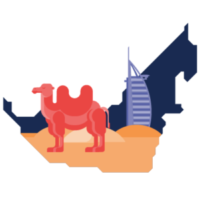 1) China
1) China
The world’s largest ecommerce market shows no signs of slowing down anytime soon. China already dominates Asian ecommerce, accounting for over 80 per cent of the region’s online shopping sales, with the country’s online retail market expected to become the first to reach $1 trillion later this year. According to Statista, ecommerce sales account for 28 per cent of China’s total retail sales, leaving a vast section of the country’s spending power untapped by ecommerce platforms.
A diverse range of local ecommerce websites, including megastores Alibaba and JD.com, are competing with upstart social ecommerce platforms likes Xiaohongshu and Pinduoduo, and in the process are establishing innovative new ways to shop online. The online shopping market in China has pioneered the use of so-called ‘new retail’, which sees the merger of offline and online retail channels, helping ensure the growth in online sales remains robust.
As residents in rural Chinese villages become connected to the Internet – primarily through mobile devices – the ecommerce sector will scale new heights, reaching $1.8 trillion by 2022, according to market research firm Forrester.
 2) Brazil
2) Brazil
Brazil’s ecommerce sector is rapidly developing on the back of the more than 120 million internet users who have made the country Latin America’s largest online shopping market. Global ecommerce players are heavily investing in the country, with Amazon quadrupling the size of its warehouse earlier this year, an indication that the American firm is preparing to expand operations.
As concerns around payment security and weak logistics continue to be overcome, Brazil’s vast base of Internet users are increasingly confident shopping online and trust that delivery will be on time. International e-tailers already have a strong presence in the Brazilian market due to the often-complex tax conditions faced by local ecommerce firms.
Local companies like Magazine Luiza have adopted an omnichannel approach to ward off challengers and are using their physical stores as distribution networks to make the consumer’s purchasing journey more streamlined. Over 40 per cent of Latin America’s total ecommerce sales originate from Brazil, with the country on track to record annual ecommerce sales growth in the double digits until at least 2021, according to Euromonitor International.
 3) Poland
3) Poland
Poland ranks as one of the strongest ecommerce markets in Central and Eastern Europe, with the sector enjoying double-digit growth every year since 2012. The ecommerce landscape in the country is heavily dominated by local players, most notably shopping platform Allegro, with 53 per cent of Internet users buying from Polish e-tailers, compared to only 16 per cent purchasing from foreign online platforms, according to business consultancy Gemius.
Robust mobile commerce sales are helping drive forward the Polish online shopping market, as mobile payments are growing at substantially higher levels than ecommerce as a whole. Strong Internet penetration rates and growing awareness of the safety of buying online, alongside a new Sunday trading ban, are expected to further boost the Polish ecommerce industry.
Chinese e-tailer Aliexpress has been working hard to pursue Polish customers by offering free delivery, and is now the number one foreign shopping platform in the country, beating out Western rivals including eBay and Amazon.
 4) United Arab Emirates
4) United Arab Emirates
The ecommerce sector in the United Arab Emirates isn’t as well developed as Western markets, accounting for a meagre two per cent of total retail sales, according to a Boston Consulting Group report. Yet the growth potential in the emirates is vast, thanks to a burgeoning young population, improved fulfilment infrastructure and an increasingly comprehensive selection of goods available online, which are allowing e-tailers to more effectively compete against traditional shopping malls.
Business-to-consumer sales doubled from 2015 to 2017, and this growth is forecast to continue at annual rates of more than 20 per cent until 2021, according to a report from Research and Markets. A number of recent high-profile deals are also set to increase competition in the industry, most notably the purchase of Dubai-based ecommerce platform Souq by Amazon for an undisclosed sum.
A central part of the UAE’s transition to a more ecommerce-focused economy is the launch of two ecommerce ‘free zones,’ which provide high-tech warehouse spaces where goods can be held before being shipped off around the world.
 5) India
5) India
Despite slowing down in recent years, India’s ecommerce sector is still growing at a faster rate than other leading Asian nations including South Korea, China and Japan. According to research from Forrester, Indian ecommerce sales are expected to experience a growth rate of almost 30 per cent by 2022, rapidly expanding from the current annual level of $27 billion.
The increasingly affordable price of smartphones and mobile data, alongside a growing middle class, are attracting more and more of the over 1.3 billion Indians to online marketplaces. Almost half of the country’s total Internet users are mobile-only, and this number is on track to increase as rural Indians continue to come online via smartphones.
Local and foreign ecommerce firms are fiercely competing to gain the upper hand and are making major investments in infrastructure and logistics solutions. There is a huge opportunity for e-tailers in India as only 14 per cent of Indians with an Internet connection buy online, according to Morgan Stanley, leaving a potential market of hundreds of millions of citizens.
